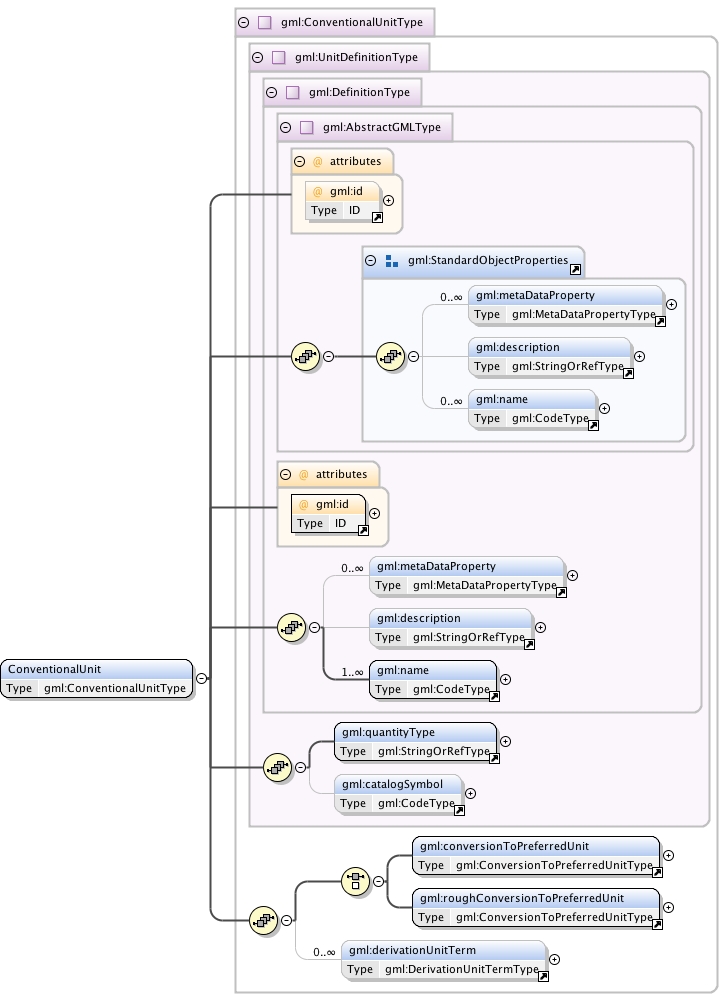| Namespace | http://www.opengis.net/gml | |||||||||||||
|
Diagram
|
 |
|||||||||||||
| Type | gml:ConventionalUnitType | |||||||||||||
| Type hierarchy | ||||||||||||||
|
Properties
|
|
|||||||||||||
| Model | gml:metaDataProperty* , gml:description{0,1} , gml:name+ , gml:quantityType , gml:catalogSymbol{0,1} , (gml:conversionToPreferredUnit | gml:roughConversionToPreferredUnit) , gml:derivationUnitTerm* | |||||||||||||
| Children | gml:catalogSymbol, gml:conversionToPreferredUnit, gml:derivationUnitTerm, gml:description, gml:metaDataProperty, gml:name, gml:quantityType, gml:roughConversionToPreferredUnit | |||||||||||||
|
Attributes
|
|
|||||||||||||
|
Source
|
|
|||||||||||||
| Schema location | http://schemas.opengis.net/gml/3.1.1/base/units.xsd |